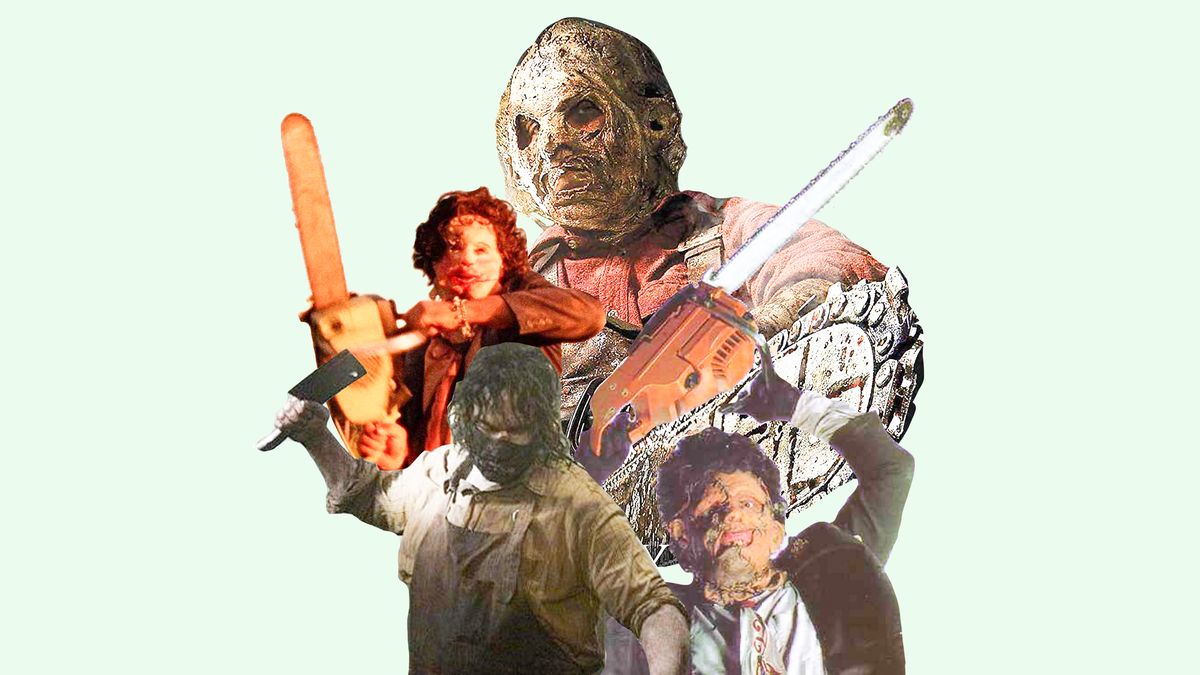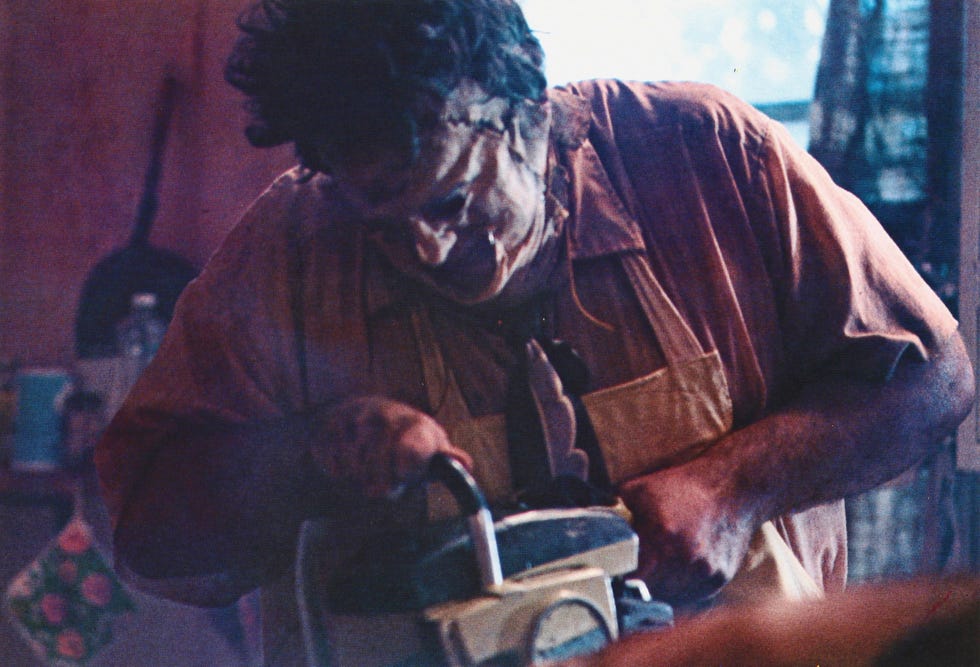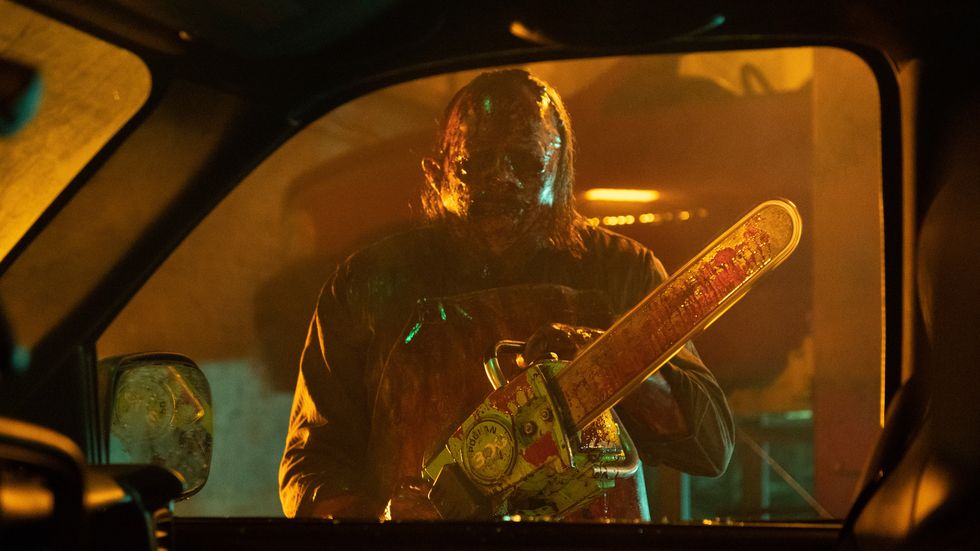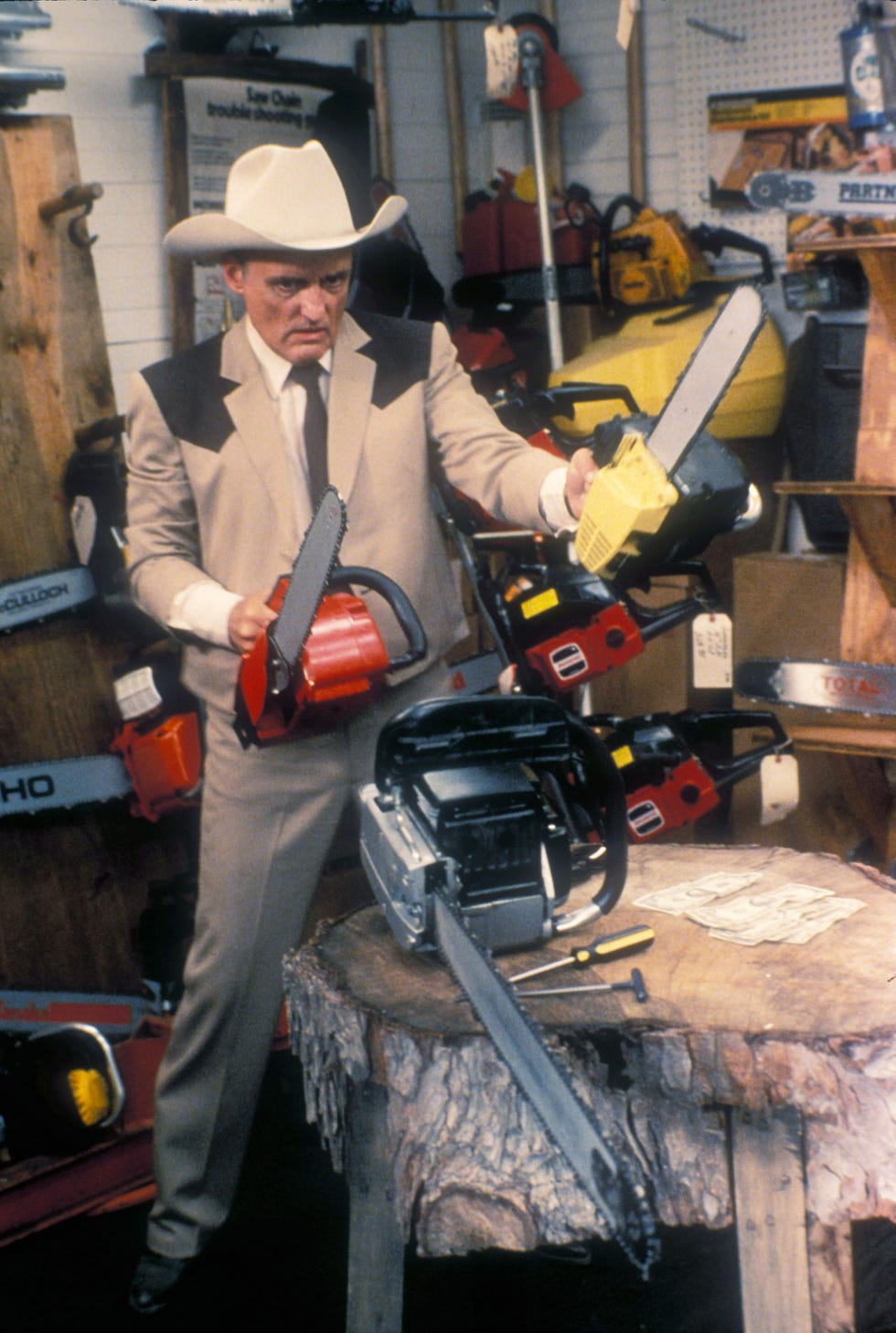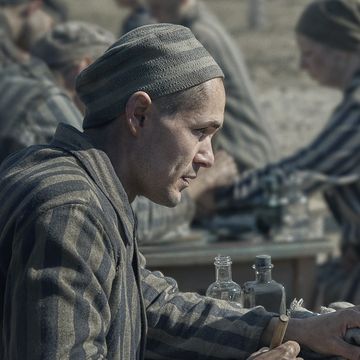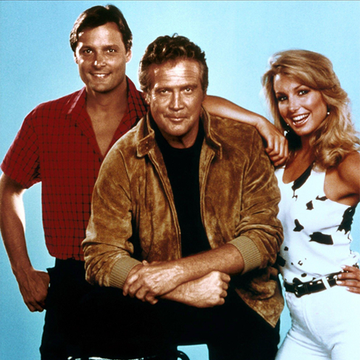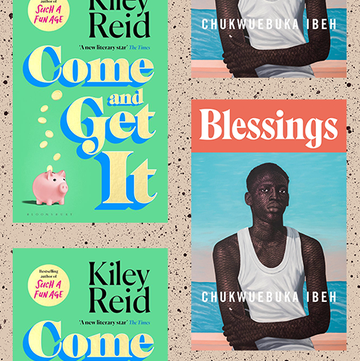No horror movie is greater than The Texas Chainsaw Massacre. Yet no classic has also spawned as many misguided sequels as Tobe Hooper’s 1974 nightmare, whose grindhouse legacy is as unimpeachable and enduring as its progeny’s reputations are–with one stark, glorious exception–deservedly awful. Netflix’s new Texas Chainsaw Massacre (February 18), the franchise’s ninth entry, doesn’t change that trend; the tale of a group of millennials who fall prey to Leatherface in an abandoned town that they’re trying to resurrect via cash infusions from party-busing entrepreneurs (!?!?), it does just about everything wrong in attempting to recapture its forefather’s macabre magic. It’s not the worst film to feature Leatherface and his enormous weapon of choice, but it reconfirms that, for nearly fifty years, no artist other than Hooper has ever truly understood the raw, terrifying power of the original and its chainsaw-wielding psychopath.
To comprehend the folly of these follow-ups, it’s vital to first revisit the source. Hooper’s sophomore directorial outing is an unforgettably inventive work of malevolence, combining grubby, sunburnt 16mm visuals, ragged and spiralling staging and editing, and a mean streak a mile wide to create a borderline-hallucinatory descent into mayhem. Loosely inspired by real-life serial killer Ed Gein, it recounts the grisly ordeal of Sally Hardesty (Marilyn Burns), her wheelchair-bound brother Franklin (Paul A. Partain) and their three friends, whose trip to check out the desecrated grave of Sally and Franklin’s relative leads them into the clutches of a clan of demented lunatics which include Leatherface (Gunnar Hansen), an unhinged giant in a dead skin mask who has a fondness for chainsaw murder and mutilation. Things go very, very badly, and while Sally survives, so too does Leatherface, who in a peerless final shot is left swinging his buzzsaw in the sunlight, a figure of uncontrollable, eternal, primal rage.
In every respect, The Texas Chainsaw Massacre radiates evil: its aesthetics, marked by low, upwards-gazing compositions and sharp, swirling cutting, are at once frenzied and poised; its scripting is unpredictable and coiled, with its signature scenes making you feel as if you’re sinking deeper and deeper into madness; and its centrepiece fiend is a wild man-child brute who’s uniquely off his rocker, as prone to shriek and cower like a frightened adolescent (or a cornered, wounded animal) as he is to roar and rampage. Eschewing any semblance of convention, and generating squeamish dread without the use of explicit gore, Hooper’s film is a scuzzy slab of rotten meat in cinematic form. Moreover, it oozes contempt for its protagonists–and in particular, for Franklin, an insufferable raspberry-spitting paraplegic whiner–such that it doubles as a stinging rebuke of the flower-power era. Sally and company are happy-go-lucky hippies who view the American frontier as a playground where they’re free to frolic (and pick up hitchhikers), and for their foolish arrogance, they’re roundly and viciously punished.
Toss in perhaps the scariest image in horror-movie history–that slamming steel door–and The Texas Chainsaw Massacre has rightfully earned its peak genre status. The same fate, alas, will not befall Netflix’s drop-the-The Texas Chainsaw Massacre, which follows in the footsteps of prior sequels by completely and utterly misunderstanding its predecessor. That begins with Leatherface himself, whom Hooper, co-writer Kim Henkel and actor Gunnar Hansen initially conceived as a squealing freaky-deaky butcher with underlying self-image and identity-crisis hang-ups. Beginning with 1990’s Leatherface: The Texas Chainsaw Massacre III, however, the series refashioned the villain into a far more simplistic sort of monster: an invincible goliath with only carnage on his mind. He became, in effect, akin to a gnarlier Jason Vorhees or Michael Myers. Such a transformation was in keeping with Leatherface’s eagerness to reimagine the saga in straightforward slasher-film terms – a decision that meant considerably more blood and gruesomeness, but resulted in a severe drop-off in memorable suspense.
The most notable thing about Leatherface and 1995’s The Texas Chainsaw Massacre: The Next Generation (written and directed by Henkel) is that they boast a few future A-listers: Viggo Mortensen in the former, and Renée Zellweger and Matthew McConaughey (replete with an early “Alright, alright, alright”) in the latter. While The Next Generation vainly emulates the grizzled low-budget style of The Texas Chainsaw Massacre, the rest of the series’ entries have taken a flashier route, peaking with the Michael Bay-produced 2003 remake The Texas Chainsaw Massacre and 2006 prequel The Texas Chainsaw Massacre: The Beginning, whose main claims to infamy are their glossy grunginess and uninhibited drooling over their female heroines (Jessica Biel, Jordana Brewster). Similar ogling typifies 2013’s Texas Chainsaw 3D (starring Alexandra Daddario and Tania Raymonde). That’s not the case with 2017’s Leatherface, which instead squanders its energy on laughable guessing games regarding which of its teenage ciphers will grow up to believe that “The Saw is Family.”
A fundamental problem with all of these sequels–including Netflix’s latest–is their interest in casting Leatherface as either an unwavering killing machine or a sympathetic tormented-and-twisted soul (now with overt mommy issues, an idea introduced in 2003’s remake) rather than as an insane manifestation of elemental and national beastliness. Hooper’s two directorial efforts envision their chaos as expressions of historic individual and American brutality, be it via The Texas Chainsaw Massacre having Franklin reveal his own ancestral ties to slaughterhouses, or 1986’s The Texas Chainsaw Massacre 2 portraying Leatherface’s hippie-turned-Vietnam-vet brother Chop Top (Bill Moseley) as a warped byproduct of U.S. war (“’Nam Land! Napalm! Fire in the hole!”), and situating its climactic showdown at the ghoulish Texas Battle Land. The rest of these throwaways, meanwhile, fall back on the laziest of clichés when it comes to Leatherface, whom they depict as a generic marauder who occasionally pops out of the dark to slay bland innocents.
From 1990’s Leatherface to 2022’s Texas Chainsaw Massacre, the franchise has played by hackneyed horror rules, rendering Leatherface and his relatives caricatures of their former selves. It has also, to a tee, wrongly assumed that the surest path to scares is by duplicating The Texas Chainsaw Massacre’s trademarks. On the basis of these misbegotten endeavours, a series sequel must contain some of the following: an introductory text crawl that pretends its narrative is based on a real story; flashbulbs that make creepy-screechy noises; a low-angled shot of a woman’s ass as she walks toward a rural house or structure; characters traveling in a van; an imposing metal door; a supporting character who at first appears helpful, but is eventually exposed as bad and/or in league with Leatherface; a maniacal dinner table sequence in which a victim is tied to a chair; a scene in which a woman flees through a nocturnal forest toward the camera as a pursuing Leatherface looms behind her; shots of people being hung on meat hooks and stuffed in freezers; and closing images of a frustrated Leatherface twirling about with his chainsaw.
The new Texas Chainsaw Massacre indulges in merely a few of those creaky tricks, yet that doesn’t prevent it from rehashing a tiresome routine. Garcia’s film is a collection of formulaic murders tethered together by the lamest of conceits; the notion that these twentysomethings want to live, work and invest in a Texas ghost town is comically preposterous. Worse, it seems primed to mimic its forerunner’s antipathy by functioning as an indictment of entitled social media-obsessed millennials, only to then ask us to actually care about their survival against a colossus who must now be pushing 70 years old. Like Texas Chainsaw 3D, it’s technically a dull requel and though it may relish seeing attractive young men and women perish at the end of a chainsaw (or sledgehammer, or blade), it covets – rather than stymies – viewer identification with its characters. Central to Hooper’s classic was a homicidal disgust for its characters, which contributed to, and was in tune with, its overarching malice. Offspring such as Texas Chainsaw Massacre, on the other hand, are just facile knock-offs without a serious thought in their caved-in heads.
Save, that is, for Hooper’s own 1986 sequel, The Texas Chainsaw Massacre 2, which thrives by going whole-hog in the opposite direction of its antecedent. A Grand Guignol funhouse of death and depravity that concerns a local DJ (Caroline Williams) and Sally’s ex-Texas Ranger uncle (Dennis Hopper) clashing with Leatherface, Chop Top and their surrogate paterfamilias Drayton Sawyer (Jim Siedow), the film is a steroidally sinister Looney Tunes cartoon in which The Texas Chainsaw Massacre’s defining elements – its carnage, its psychosexual undertones, its sociopolitical critiques – are amplified to outrageous degrees. Whether it’s underscoring the phallic nature of Leatherface’s favourite murder apparatus, leaning into the Beauty and the Beast-style dynamic he shares with his final-girl objects of desire, or reveling in the gonzo absurdity of a quasi-Star Wars chainsaw-vs-chainsaw melee, it triumphs by remodeling what was once grim and alarming into a sick, hysterical joke.
Hooper turned tragedy into farce and, in doing so, unlocked the key to making a worthy Texas Chainsaw successor. Everything that’s arrived in the aftermath of the late auteur’s two gems–including Garcia’s forgettable trifle–has simply been so much decomposed roadkill.
Nick Schager is a NYC-area film critic and culture writer with twenty years of professional experience writing about all the movies you love, and countless others that you don’t.
